Hyeongyu Kim
SDC-UDA: Volumetric Unsupervised Domain Adaptation Framework for Slice-Direction Continuous Cross-Modality Medical Image Segmentation
May 18, 2023Abstract:Recent advances in deep learning-based medical image segmentation studies achieve nearly human-level performance in fully supervised manner. However, acquiring pixel-level expert annotations is extremely expensive and laborious in medical imaging fields. Unsupervised domain adaptation (UDA) can alleviate this problem, which makes it possible to use annotated data in one imaging modality to train a network that can successfully perform segmentation on target imaging modality with no labels. In this work, we propose SDC-UDA, a simple yet effective volumetric UDA framework for slice-direction continuous cross-modality medical image segmentation which combines intra- and inter-slice self-attentive image translation, uncertainty-constrained pseudo-label refinement, and volumetric self-training. Our method is distinguished from previous methods on UDA for medical image segmentation in that it can obtain continuous segmentation in the slice direction, thereby ensuring higher accuracy and potential in clinical practice. We validate SDC-UDA with multiple publicly available cross-modality medical image segmentation datasets and achieve state-of-the-art segmentation performance, not to mention the superior slice-direction continuity of prediction compared to previous studies.
COSMOS: Cross-Modality Unsupervised Domain Adaptation for 3D Medical Image Segmentation based on Target-aware Domain Translation and Iterative Self-Training
Mar 30, 2022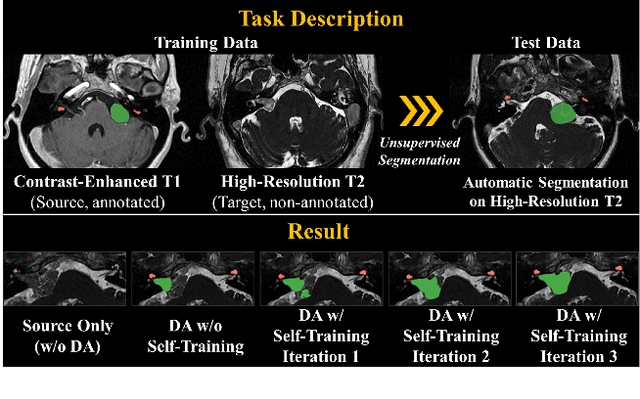

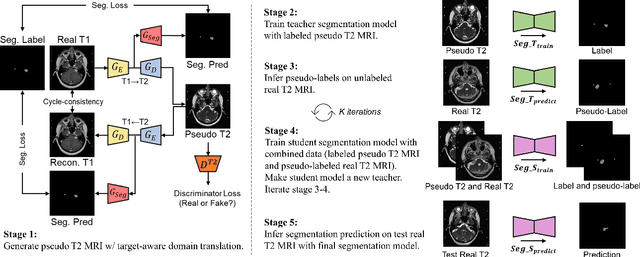
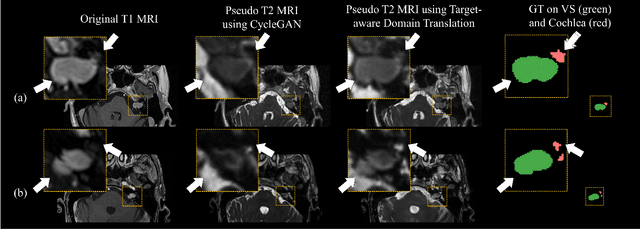
Abstract:Recent advances in deep learning-based medical image segmentation studies achieve nearly human-level performance when in fully supervised condition. However, acquiring pixel-level expert annotations is extremely expensive and laborious in medical imaging fields. Unsupervised domain adaptation can alleviate this problem, which makes it possible to use annotated data in one imaging modality to train a network that can successfully perform segmentation on target imaging modality with no labels. In this work, we propose a self-training based unsupervised domain adaptation framework for 3D medical image segmentation named COSMOS and validate it with automatic segmentation of Vestibular Schwannoma (VS) and cochlea on high-resolution T2 Magnetic Resonance Images (MRI). Our target-aware contrast conversion network translates source domain annotated T1 MRI to pseudo T2 MRI to enable segmentation training on target domain, while preserving important anatomical features of interest in the converted images. Iterative self-training is followed to incorporate unlabeled data to training and incrementally improve the quality of pseudo-labels, thereby leading to improved performance of segmentation. COSMOS won the 1\textsuperscript{st} place in the Cross-Modality Domain Adaptation (crossMoDA) challenge held in conjunction with the 24th International Conference on Medical Image Computing and Computer Assisted Intervention (MICCAI 2021). It achieves mean Dice score and Average Symmetric Surface Distance of 0.871(0.063) and 0.437(0.270) for VS, and 0.842(0.020) and 0.152(0.030) for cochlea.
Self-Training Based Unsupervised Cross-Modality Domain Adaptation for Vestibular Schwannoma and Cochlea Segmentation
Sep 22, 2021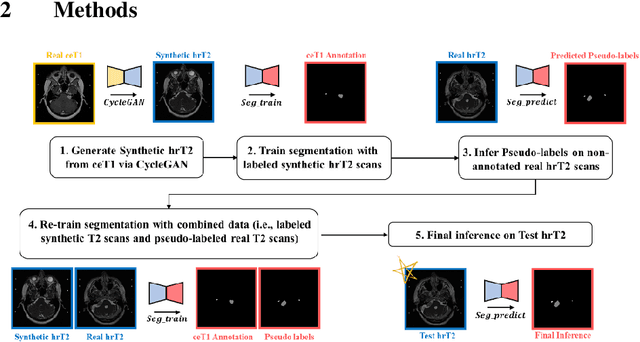
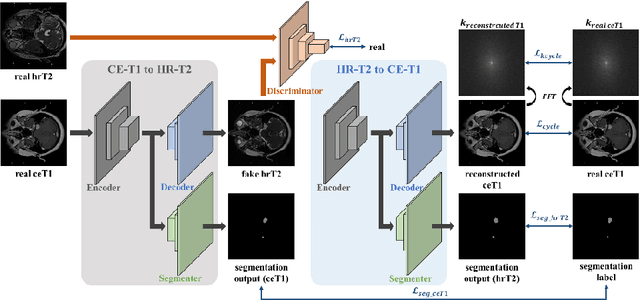
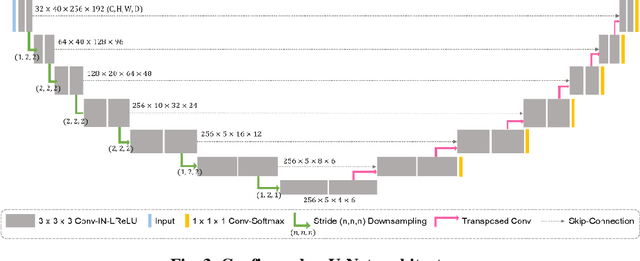
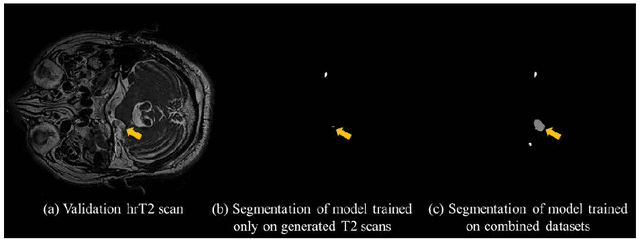
Abstract:With the advances of deep learning, many medical image segmentation studies achieve human-level performance when in fully supervised condition. However, it is extremely expensive to acquire annotation on every data in medical fields, especially on magnetic resonance images (MRI) that comprise many different contrasts. Unsupervised methods can alleviate this problem; however, the performance drop is inevitable compared to fully supervised methods. In this work, we propose a self-training based unsupervised-learning framework that performs automatic segmentation of Vestibular Schwannoma (VS) and cochlea on high-resolution T2 scans. Our method consists of 4 main stages: 1) VS-preserving contrast conversion from contrast-enhanced T1 scan to high-resolution T2 scan, 2) training segmentation on generated T2 scans with annotations on T1 scans, and 3) Inferring pseudo-labels on non-annotated real T2 scans, and 4) boosting the generalizability of VS and cochlea segmentation by training with combined data (i.e., real T2 scans with pseudo-labels and generated T2 scans with true annotations). Our method showed mean Dice score and Average Symmetric Surface Distance (ASSD) of 0.8570 (0.0705) and 0.4970 (0.3391) for VS, 0.8446 (0.0211) and 0.1513 (0.0314) for Cochlea on CrossMoDA2021 challenge validation phase leaderboard, outperforming most other approaches.
 Add to Chrome
Add to Chrome Add to Firefox
Add to Firefox Add to Edge
Add to Edge